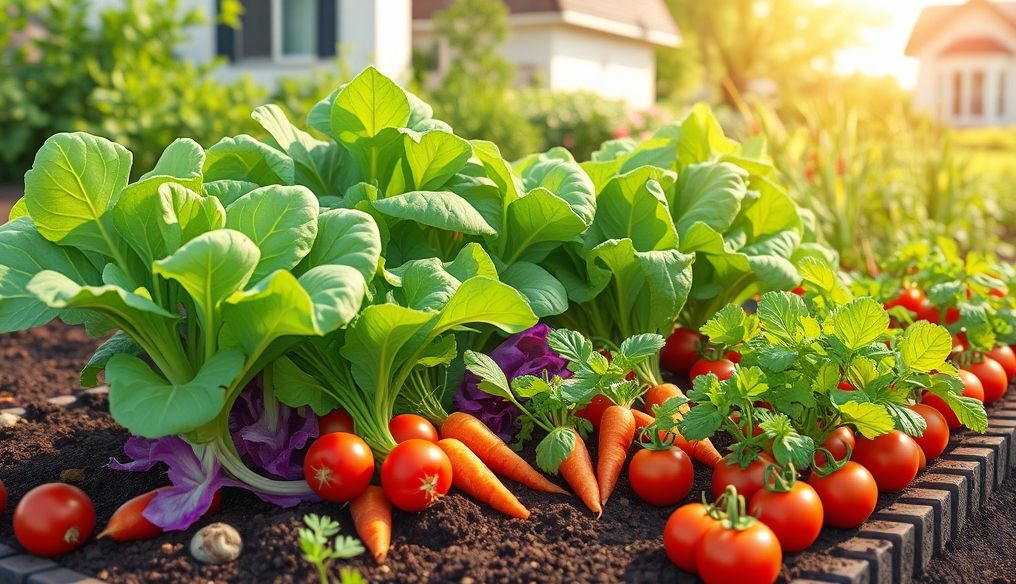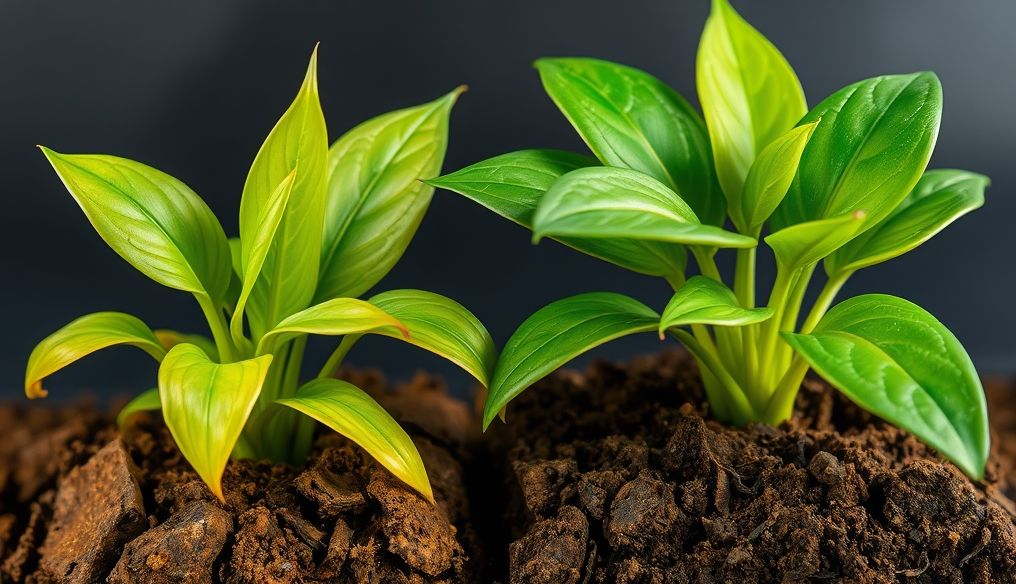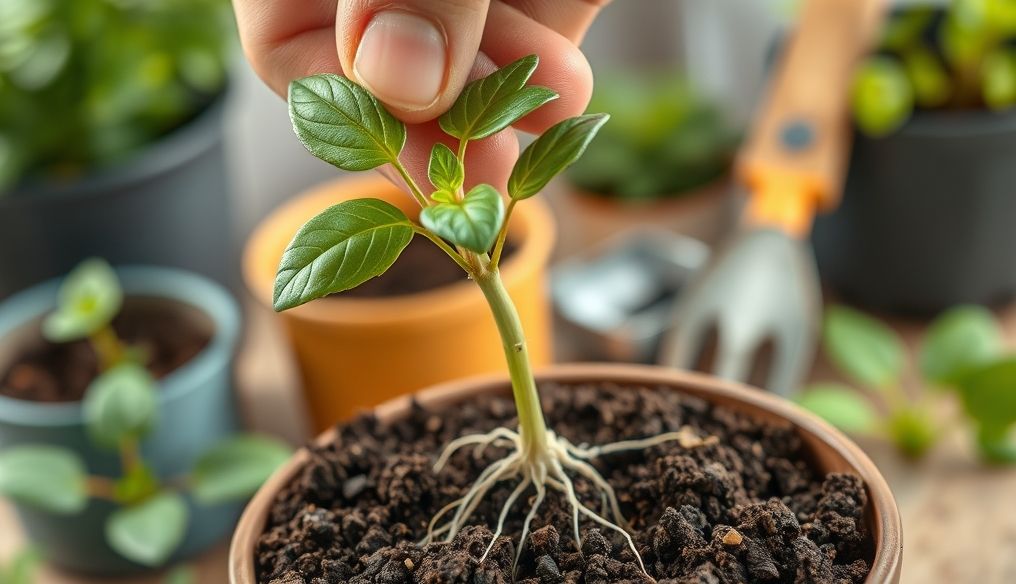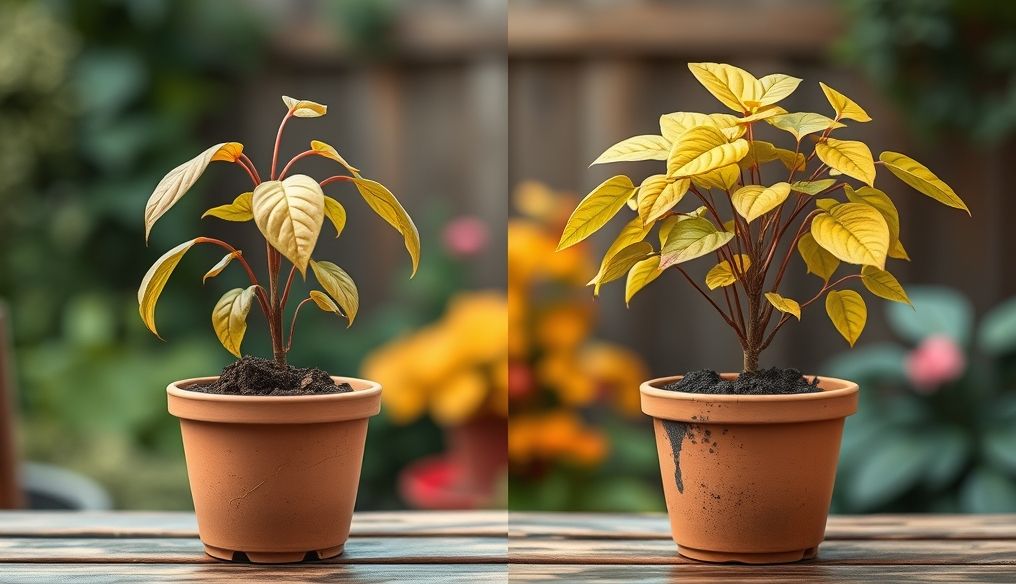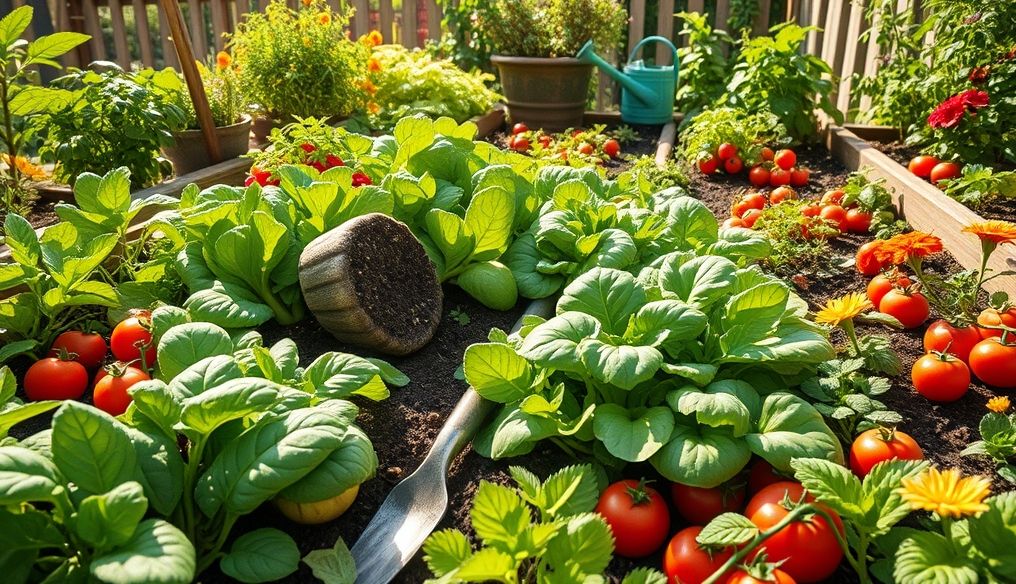What Are the Easiest Vegetables to Grow for Beginners?
Growing vegetables at home is not just a fun hobby, but also a great way to get fresh, healthy, and pesticide-free vegetables. It may seem difficult at first, but there are many vegetables that are easy to grow and perfectly suitable for beginners. In this article, we will review in detail the easiest vegetables you can grow in your garden or even in pots on your balcony, providing tips and guidance on how to grow and care for them.
Why Should You Start with Easy-to-Grow Vegetables?
- Success Motivates: Growing easy vegetables and succeeding in it gives you the motivation to continue and try other types.
- Saving Time and Effort: These vegetables do not require much care, making them ideal for busy people.
- Resistance to Diseases and Pests: These vegetables are characterized by their resistance to common diseases and pests, reducing the need to use pesticides.
- Bountiful Harvest: Despite being easy to grow, these vegetables produce a bountiful harvest that you can enjoy.
Easiest Vegetables to Grow: A Comprehensive Guide for Beginners
1. Lettuce
Lettuce is one of the easiest vegetables you can grow. It grows quickly and can be harvested in a few weeks. There are many different varieties to choose from, such as romaine lettuce and leaf lettuce.
How to Grow Lettuce:
- Choosing the Location: Lettuce prefers partially sunny locations.
- Soil: Lettuce needs well-drained soil rich in organic matter.
- Sowing: Lettuce can be grown directly in the ground or in pots.
- Watering: Keep the soil moist, but avoid overwatering.
- Harvesting: Lettuce can be harvested when the leaves are large enough to use.
2. Radishes
Radishes are root vegetables that grow quickly and are ideal for beginners. Radishes grow in just one month and can be planted in spring and fall.
How to Grow Radishes:
- Choosing the Location: Radishes need a sunny location.
- Soil: Radishes prefer well-drained sandy soil.
- Sowing: Sow radish seeds directly into the ground at a depth of about 1 cm.
- Watering: Keep the soil moist.
- Harvesting: Radishes can be harvested when they reach a diameter of about 2.5 cm.
3. Spinach
Spinach is a nutritious and easy-to-grow leafy vegetable. Spinach can be grown in spring and fall and takes about a month to harvest.
How to Grow Spinach:
- Choosing the Location: Spinach prefers partially sunny locations.
- Soil: Spinach needs soil rich in organic matter.
- Sowing: Sow spinach seeds directly into the ground at a depth of about 1 cm.
- Watering: Keep the soil moist.
- Harvesting: Spinach can be harvested when the leaves are large enough to use.
4. Carrots
Carrots are delicious and relatively easy-to-grow root vegetables. Carrots need loose, sandy soil to grow well.
How to Grow Carrots:
- Choosing the Location: Carrots need a sunny location.
- Soil: Carrots prefer well-drained sandy soil.
- Sowing: Sow carrot seeds directly into the ground at a depth of about 1 cm.
- Watering: Keep the soil moist.
- Harvesting: Carrots can be harvested when they reach a diameter of about 2.5 cm.
5. Peas
Peas are delicious and easy-to-grow vegetables. Peas need support to climb on.
How to Grow Peas:
- Choosing the Location: Peas prefer sunny locations.
- Soil: Peas need well-drained soil rich in organic matter.
- Sowing: Sow pea seeds directly into the ground at a depth of about 2.5 cm.
- Watering: Keep the soil moist.
- Support: Provide support for the peas to climb on.
- Harvesting: Peas can be harvested when the pods are full.
6. Zucchini
Zucchini is a highly productive and easy-to-grow summer vegetable. A single zucchini plant can produce a lot of fruit.
How to Grow Zucchini:
- Choosing the Location: Zucchini needs a sunny location.
- Soil: Zucchini needs soil rich in organic matter.
- Sowing: Sow zucchini seeds directly into the ground at a depth of about 2.5 cm.
- Watering: Keep the soil moist.
- Harvesting: Zucchini can be harvested when the fruits are small and tender.
7. Peppers
Peppers are versatile and easy-to-grow vegetables. There are many different varieties to choose from, from sweet peppers to hot peppers.
How to Grow Peppers:
- Choosing the Location: Peppers need a sunny location.
- Soil: Peppers need well-drained soil rich in organic matter.
- Sowing: Start sowing pepper seeds indoors about 6-8 weeks before the last expected frost.
- Planting: Plant pepper seedlings in the garden after the danger of frost has passed.
- Watering: Keep the soil moist.
- Support: Some pepper varieties may need support.
- Harvesting: Peppers can be harvested when they are brightly colored and firm.
8. Cherry Tomatoes
Cherry tomatoes are a type of small, delicious, and easy-to-grow tomato. They are ideal for growing in pots.
How to Grow Cherry Tomatoes:
- Choosing the Location: Cherry tomatoes need a sunny location.
- Soil: Cherry tomatoes need well-drained soil rich in organic matter.
- Sowing: Start sowing cherry tomato seeds indoors about 6-8 weeks before the last expected frost.
- Planting: Plant cherry tomato seedlings in the garden or in pots after the danger of frost has passed.
- Watering: Keep the soil moist.
- Support: Cherry tomatoes need support.
- Harvesting: Cherry tomatoes can be harvested when they are red and tender.
9. Green Onions
Green onions are very easy to grow and can be planted in a pot or in the garden. You can harvest the green leaves continuously.
How to Grow Green Onions:
- Choosing the Location: Green onions prefer partially sunny locations.
- Soil: Green onions need well-drained soil.
- Sowing: Seeds can be sown directly into the ground or in a pot.
- Watering: Keep the soil moist.
- Harvesting: Cut the green leaves as needed.
10. Cucumber
Cucumber is a fast-growing climbing plant that can be easily grown. It needs support to climb.
How to Grow Cucumber:
- Choosing the Location: Cucumber needs a sunny location.
- Soil: Cucumber needs soil rich in organic matter and well-drained.
- Sowing: Seeds can be sown directly into the ground after the danger of frost has passed.
- Watering: Keep the soil moist regularly.
- Support: Provide a trellis or support for the cucumber to climb on.
- Harvesting: Harvest the cucumber when it reaches the desired size before it turns yellow.
Additional Tips for Growing Vegetables for Beginners
- Start Small: Don't try to grow too many vegetables at first. Start with a small amount and then increase gradually.
- Choose the Right Location: Make sure the location you choose gets enough sunlight.
- Use Good Soil: Use soil rich in organic matter and well-drained.
- Regular Watering: Keep the soil moist, but avoid overwatering.
- Fertilizing: Fertilize the vegetables regularly using organic fertilizer.
- Pest and Disease Control: Check the vegetables regularly for pests and diseases. Use organic insecticides and fungicides if necessary.
- Enjoy the Process: Growing vegetables should be fun! Don't put pressure on yourself and try to enjoy the process.
Conclusion
Growing vegetables at home is a rewarding and enjoyable experience. By choosing easy vegetables and following the tips and guidelines mentioned above, you can enjoy a bountiful harvest of fresh and healthy vegetables. Start today and enjoy the benefits of growing vegetables at home!
